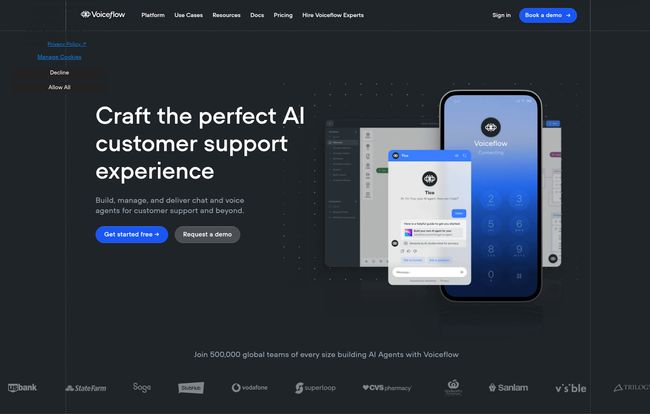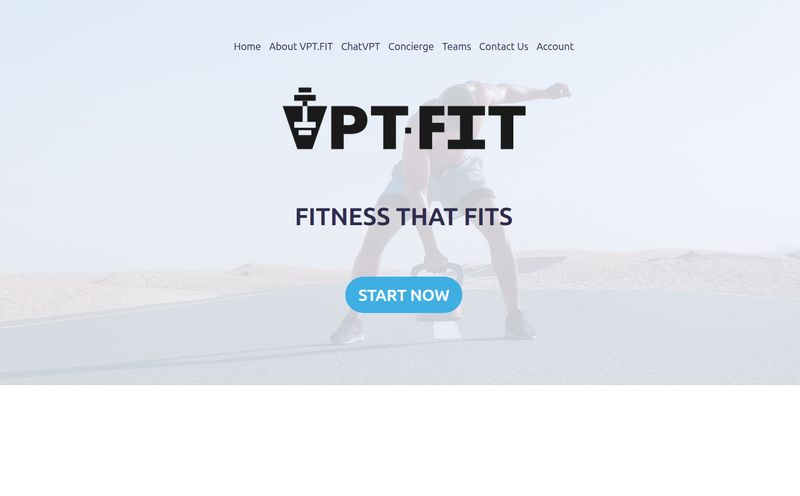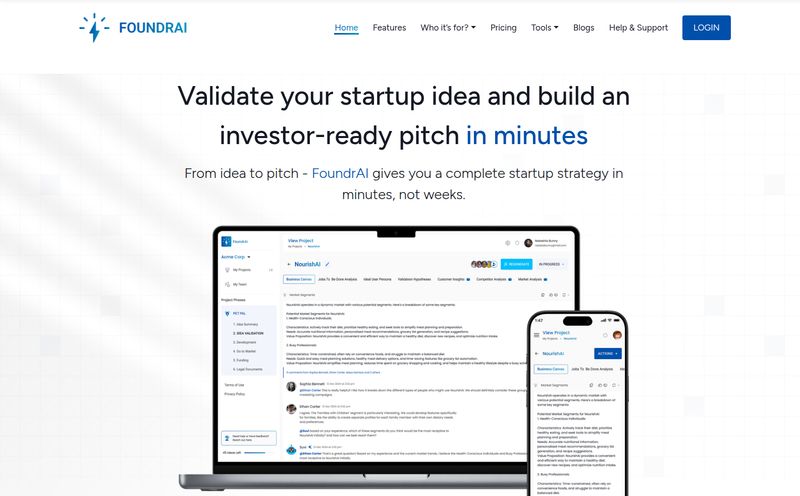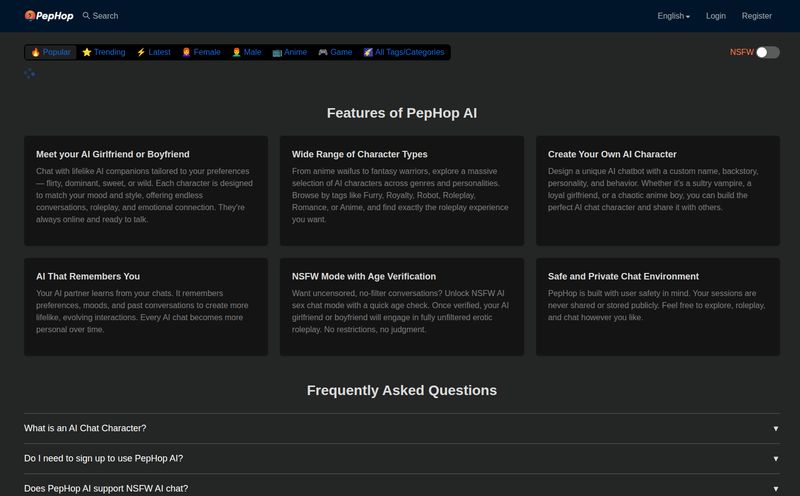We've all been there. Trapped in a digital purgatory with a customer service chatbot that has the conversational skills of a toaster. You ask a simple question, it gives you a link to an irrelevant FAQ page from 2017. You rephrase, it says, "I'm sorry, I don't understand." It's enough to make you want to throw your laptop out the window.
For years, I've watched the promise of conversational AI fall flat for so many businesses. The tools were either too simple to be useful or so complex they required a team of PhDs to manage. It's been a frustrating space. But every now and then, a platform comes along that feels… different. Like it was built by people who have actually felt that pain and decided to do something about it.
That's the vibe I get from Voiceflow. It’s not just another chatbot builder. It’s a full-blown collaborative platform for creating sophisticated AI agents. And after spending some time with it, I’m convinced it might just be the tool that helps us build AI experiences that don't, for lack of a better word, suck.

Visit Voiceflow
So, What Is Voiceflow, Really?
Calling Voiceflow a “chatbot builder” is like calling a Porsche a “car.” It's technically true, but it misses the entire point. The platform positions itself as a tool for teams to build, manage, and deploy AI Agents. Notice the wording: Agents, not bots. That's an intentional choice. They’re aiming for something more capable, more integrated, and more… human.
I like to think of it as a visual design studio for conversations. It gives you this big, open canvas where you can map out every possible turn a customer interaction could take. It's less like filling out a form and more like being an architect designing a building, except the building is a conversation. You're crafting an experience, not just a response tree.
It's designed from the ground up for collaboration, which is a big deal. The days of a single developer hacking away at a bot in isolation are over. To build something good, you need your designers, your developers, and your product people all in the same room (or, you know, the same virtual workspace). Voiceflow gets that.
Who Should Be Using Voiceflow?
This isn't a tool for your cousin who wants to build a simple bot for his garage band's website. It could do that, but it would be overkill. Voiceflow is a professional-grade platform aimed squarely at product teams inside companies that are serious about their customer experience.
We're talking about:
- Product Managers who need to oversee the entire agent's lifecycle.
- Conversation Designers who obsess over the flow, the wording, and the user's emotional state.
- Developers who need to integrate the agent with backend systems, APIs, and third-party tools like Zendesk or Salesforce.
If your team is trying to automate complex customer support queries, build a helpful in-app copilot, or seriously upgrade your contact center's capabilities, you're the target audience. The fact that giants like Google, Amazon, and Ford are using it should tell you something about the scale it's built for.
The Features That Actually Move the Needle
A platform is only as good as its features, right? A lot of tools have flashy dashboards that don't do much. Voiceflow, thankfully, seems to focus on stuff that genuinely helps you build better agents.
The Visual Workflow Builder: Your Command Center
This is the heart of Voiceflow. It's a drag-and-drop canvas that lets you visually map out conversational flows. You can see the entire agent logic at a glance, from the initial greeting to complex, branching paths based on user input. I'll be honest, there's a bit of a learning curve. It's powerful, and with power comes a little complexity. But once you get the hang of it, you feel like you're conducting an orchestra. You can prototype, test, and refine flows in real-time, which cuts down development time immensely.
A Knowledge Base That Gives Your AI a Brain
This is probably the most critical feature for modern AI. A workflow can only handle what you've explicitly told it to. What about the thousands of questions you didn't anticipate? That's where the Knowledge Base comes in. You can feed it your company's existing help docs, website content, PDFs, and more. The AI agent then uses this information to answer questions intelligently, without you having to build a separate workflow for every single query. This is how you escape the dreaded "I don't understand" loop.
Playing Nice with Others: All About Integrations
An AI agent that can't connect to your other tools is just a fancy FAQ. Voiceflow shines here. It’s built to be the conversational layer on top of your existing tech stack. You can pull customer data from Salesforce, create a ticket in Zendesk, or send a notification to a Slack channel, all from within a conversation. This ability to take real action is what separates a gimmick from a genuinely useful automation tool.
My Experience Kicking the Tires on Voiceflow
When I started playing around with the platform, the first thing that struck me was the focus on teamwork. You can leave comments on specific parts of the workflow, tag teammates, and iterate together. It feels like a Figma or Google Docs, but for conversations. This is a far cry from the old days of passing around spreadsheets with dialogue options.
"Building a complex, multimodal experience in-house would have taken us a year. With Voiceflow, we shipped in three months."
- Evin Nomer, VP of Engineering, LevelTen
That quote from the LevelTen VP on Voiceflow's site really hits home. They claim to have saved $420,000 in a year. That's a bold claim, but when you consider the cost of developer time and the opportunity cost of slow deployment, you can see how a platform like this pays for itself. It lets you move faster, test more, and ultimately launch a better product.
The Big Question: How Much Does Voiceflow Cost?
Ah, the million-dollar question. Or, hopefully, a bit less. Voiceflow's pricing isn't plastered all over their homepage. They use a model common for professional SaaS platforms: a free tier for individuals to learn and build, and then you move into paid plans that often require a demo or conversation with their sales team.
On one hand, this can be a bit annoying when you just want a number. On the other, it makes sense. Their pricing likely depends on factors like the number of users on your team, the volume of interactions your agent will handle, and the level of support you need. A small startup's needs are wildly different from The Home Depot's.
My advice? Don't let the "Request a Demo" button scare you. Use the free plan to see if you even like the workflow. If you do, and you see the potential for your business, then it's worth having that conversation. Professional tools often come with a professional price tag, but the ROI—like with LevelTen—can be massive.
The Good, The Bad, and The AI
No tool is perfect. Let's break it down, no sugar-coating.
What's great is that it's purpose-built for this exact job. It supports both voice and chat, which is a huge plus. The collaborative features are top-notch, and the level of customization means you're not locked into a one-size-fits-all solution.
On the flip side, the power comes with a learning curve. You'll need to invest some time to truly master the workflow builder. For smaller teams or solo devs, the pricing could be a hurdle. And while the integrations are great, you are still relying on them for certain functionalities, which is pretty standard for any modern platform but something to be aware of.
Is Voiceflow the Right Call for Your Business?
If you're a team tasked with improving customer experience through automation, and you've been disappointed by the limitations of simpler tools, then yes. I think Voiceflow should be at the very top of your list to evaluate.
If you're a solo founder who just needs a very basic bot to answer three questions, it's probably more firepower than you need. But for teams looking to build robust, integrated, and genuinely helpful AI agents, Voiceflow feels like one of the best-in-class options on the market right now.
Your Voiceflow Questions, Answered
What is Voiceflow mainly used for?
Voiceflow is primarily used by product teams to design, build, and launch advanced AI agents for customer experience automation. This includes use cases like intelligent customer support on websites, in-app assistants (copilots), and automating tasks in contact centers.
Is Voiceflow free to use?
Yes, Voiceflow offers a free plan. It's great for individuals and small projects, allowing you to learn the platform and build fully functional agents. For larger teams, collaboration features, and higher usage limits, you'll need to look at their paid plans.
Can I still build for Alexa and Google Assistant?
While Voiceflow built its early reputation as a fantastic tool for designing Alexa Skills and Google Actions, its focus has clearly shifted towards custom AI agents for web, in-app, and contact centers. The core design principles are the same, but their main commercial focus is now on these proprietary agents.
Does Voiceflow require coding knowledge?
For the most part, no. The visual workflow builder is a low-code/no-code environment, so designers and product managers can build sophisticated flows without writing code. However, for advanced integrations and custom logic, having developer resources to work with APIs and code steps is a huge advantage.
How does Voiceflow compare to platforms like Dialogflow?
Google's Dialogflow is a powerful NLU (Natural Language Understanding) engine, but it's more of a developer-centric toolset. Voiceflow is a more complete, collaborative platform that includes the visual designer, content management, and prototyping tools on top of the AI. Think of Dialogflow as a powerful engine and Voiceflow as the entire car, complete with a beautiful dashboard and comfortable seats.
The Final Word
The quest for a good conversational AI tool has been a long one. There have been many false starts and disappointing products. Voiceflow feels like a significant step in the right direction. It's a serious platform for teams who are serious about crafting AI experiences that are helpful, not infuriating. It empowers collaboration, embraces complexity, and gives you the tools to build something you can actually be proud of. And in this space, that's a pretty big deal.



